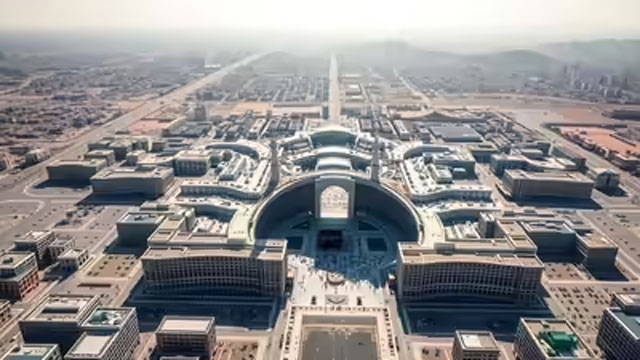Daijiworld Media Network - Makkah
Makkah, Oct 16: Saudi Arabia’s Crown Prince Mohammed bin Salman has announced one of the most ambitious urban development projects in the holy city of Makkah — the King Salman Gate. Situated adjacent to the Grand Mosque, the mega project covers a massive 12 million square meters and is poised to redefine the experience for pilgrims and residents alike.
According to Saudi Gazette, the development is a vital part of the Kingdom’s plan to enhance Makkah’s infrastructure and elevate it as a global model for urban transformation. The King Salman Gate will accommodate nearly 900,000 worshippers, offering expansive indoor halls and open-air courtyards for prayer. It also aims to provide seamless connectivity to the Grand Mosque through integrated public transport systems, ensuring a smooth flow of pilgrims during peak seasons.

Beyond religious facilities, the project promises world-class amenities with 50,000 housing units, 16,000 luxury hotel rooms, and over 200,000 square meters of retail and commercial space. A vast 39,000-space parking complex will help manage the influx of vehicles, providing greater convenience for visitors.
What sets King Salman Gate apart is its harmonious fusion of modernity and heritage. Around 19,000 square meters of historical sites surrounding Makkah will be preserved and revitalized, reflecting the Kingdom’s commitment to safeguarding its rich cultural identity even as it embraces rapid modernization.
Economically, the project is expected to be a game-changer, generating over 300,000 jobs by 2036 and significantly contributing to Saudi Arabia’s Vision 2030 goal of diversifying the economy beyond oil. Spearheaded by the Public Investment Fund (PIF) through its subsidiary Rua Al Haram Al Makki Company, the initiative will also open new avenues for global participation — with laws now allowing Muslims from around the world to own property within Makkah.
More than just an architectural marvel, King Salman Gate stands as a symbol of Saudi Arabia’s forward-looking vision — blending faith, innovation, and inclusivity. It represents a future where tradition meets transformation, paving the way for a spiritually enriching and economically sustainable tomorrow.